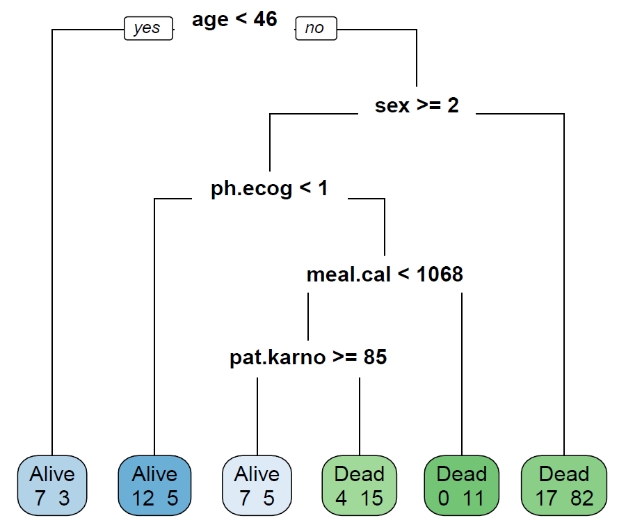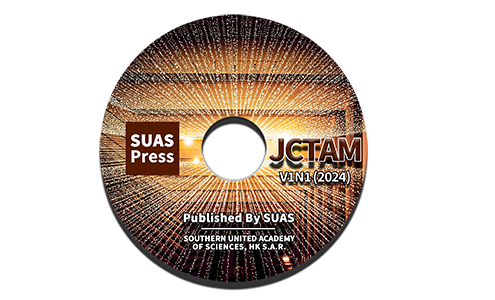Enhancing Bank Credit Risk Management Using the C5.0 Decision Tree Algorithm
DOI:
https://doi.org/10.5281/zenodo.14032041ARK:
https://n2t.net/ark:/40704/JCTAM.v1n4a12Disciplines:
Computer ScienceSubjects:
Machine Learning in FinanceReferences:
35Keywords:
Financial Fraud Risk , Credit Risk Assessment , Machine Learning , C5.0 AlgorithmAbstract
This paper discusses the relationship between financial fraud risk and credit risk in China's financial market, and points out that financial statement fraud has a serious impact on the fairness and transparency of the capital market, and damages the legitimate rights and interests of investors. Research shows that financial fraud risk may be an important signal of credit risk outbreak, and may further spread through the credit network, resulting in a larger scale of credit risk. This paper reviews the evolution of credit risk assessment models, from early expert analysis methods to modern statistical and machine learning-based methods, including Z-score models, SVM models, and random forests. Special attention is paid to the application of the C5.0 algorithm in credit risk assessment, highlighting its advantages in terms of data characteristics and prediction accuracy. Finally, the ROC curve and KS curve are used to evaluate the prediction effect of the model, which shows that the model has good prediction ability and practical value, and provides a new methodology for financial fraud risk assessment.
References
Wang, Xiangxiang, et al. "Short-Term Passenger Flow Prediction for Urban Rail Transit Based on Machine Learning." Journal of Computer Technology and Applied Mathematics 1.1 (2024): 63-69.
Zhan, Xiaoan, Chenxi Shi, Kangming Xu, Lianwei Li, and Haotian Zheng. "Aspect category sentiment analysis based on multiple attention mechanisms and pre-trained models." Applied and Computational Engineering 71 (2024): 21-26.
Li, H., Wang, X., Feng, Y., Qi, Y., & Tian, J. (2024). Driving Intelligent IoT Monitoring and Control through Cloud Computing and Machine Learning.arXiv preprint arXiv:2403.18100.
Qi, Y., Wang, X., Li, H., & Tian, J. (2024). Leveraging Federated Learning and Edge Computing for Recommendation Systems within Cloud Computing Networks. arXiv preprint arXiv:2403.03165.
Qi, Y., Feng, Y., Tian, J., Wang, X., & Li, H. (2024). Application of AI-based Data Analysis and Processing Technology in Process Industry.Journal of Computer Technology and Applied Mathematics,1(1), 54-62.
Tian, J., Qi, Y., Li, H., Feng, Y., & Wang, X. (2024). Deep Learning Algorithms Based on Computer Vision Technology and Large-Scale Image Data.Journal of Computer Technology and Applied Mathematics,1(1), 109-115.
Wang, X., Tian, J., Qi, Y., Li, H., & Feng, Y. (2024). Short-Term Passenger Flow Prediction for Urban Rail Transit Based on Machine Learning.Journal of Computer Technology and Applied Mathematics,1(1), 63-69.
Feng, Y., Li, H., Wang, X., Tian, J., & Qi, Y. (2024). Application of Machine Learning Decision Tree Algorithm Based on Big Data in Intelligent Procurement.
Tian, J.; Li, H.; Qi, Y.; Wang, X.; Feng, Y. Intelligent medical detection and diagnosis assisted by deep learning. Appl. Comput. Eng. 2024, 64, 116–121, https://doi.org/10.54254/2755-2721/64/20241356.
Cao, J.*, Ku, D., Du, J., Ng, V., Wang, Y., & Dong, W. "A Structurally Enhanced, Ergonomically and Human-Computer Interaction Improved Intelligent Seat’s System," Designs, vol. 1, no. 2, 2017, p. 11, doi: 10.3390/designs1020011.
Tian, J., Qi, Y., Li, H., Feng, Y., & Wang, X. (2024). Deep Learning Algorithms Based on Computer Vision Technology and Large-Scale Image Data. Journal of Computer Technology and Applied Mathematics, 1(1), 109-115.
Xu, Jiahao, et al. "AI-BASED RISK PREDICTION AND MONITORING IN FINANCIAL FUTURES AND SECURITIES MARKETS." The 13th International scientific and practical conference “Information and innovative technologies in the development of society”(April 02–05, 2024) Athens, Greece. International Science Group. 2024. 321 p.. 2024.
Wang, Yong, et al. "Machine Learning-Based Facial Recognition for Financial Fraud Prevention." Journal of Computer Technology and Applied Mathematics 1.1 (2024): 77-84.
Song, Jintong, et al. "LSTM-Based Deep Learning Model for Financial Market Stock Price Prediction." Journal of Economic Theory and Business Management 1.2 (2024): 43-50.
Bai, Xinzhu, Wei Jiang, and Jiahao Xu. "Development Trends in AI-Based Financial Risk Monitoring Technologies." Journal of Economic Theory and Business Management 1.2 (2024): 58-63.
Jiang, W., Yang, T., Li, A., Lin, Y., & Bai, X. (2024). The Application of Generative Artificial Intelligence in Virtual Financial Advisor and Capital Market Analysis. Academic Journal of Sociology and Management, 2(3), 40-46.
Zhou, Y.; Zhan, T.; Wu, Y.; Song, B.; Shi, C. RNA secondary structure prediction using transformer-based deep learning models. Appl. Comput. Eng. 2024, 64, 95–101, https://doi.org/10.54254/2755-2721/64/20241362.
Liu, B.; Cai, G.; Ling, Z.; Qian, J.; Zhang, Q. Precise positioning and prediction system for autonomous driving based on generative artificial intelligence. Appl. Comput. Eng. 2024, 64, 36–43, https://doi.org/10.54254/2755-2721/64/20241349.
Wang, B.; He, Y.; Shui, Z.; Xin, Q.; Lei, H. Predictive optimization of DDoS attack mitigation in distributed systems using machine learning. Appl. Comput. Eng. 2024, 64, 89–94, https://doi.org/10.54254/2755-2721/64/20241350.
Cui, Z.; Lin, L.; Zong, Y.; Chen, Y.; Wang, S. Precision gene editing using deep learning: A case study of the CRISPR-Cas9 editor. Appl. Comput. Eng. 2024, 64, 128–135, https://doi.org/10.54254/2755-2721/64/20241357.
Wang, Y.; Zhu, M.; Yuan, J.; Wang, G.; Zhou, H. The intelligent prediction and assessment of financial information risk in the cloud computing model. Appl. Comput. Eng. 2024, 64, 136–142, https://doi.org/10.54254/2755-2721/64/20241372.
Ding, W.; Tan, H.; Zhou, H.; Li, Z.; Fan, C. Immediate traffic flow monitoring and management based on multimodal data in cloud computing. Appl. Comput. Eng. 2024, 71, 1–6, https://doi.org/10.54254/2755-2721/71/2024ma0052.
Huang, C., Bandyopadhyay, A., Fan, W., Miller, A., & Gilbertson-White, S. (2023). Mental toll on working women during the COVID-19 pandemic: An exploratory study using Reddit data. PloS one, 18(1), e0280049.
Fan, C.; Li, Z.; Ding, W.; Zhou, H.; Qian, K. Integrating artificial intelligence with SLAM technology for robotic navigation and localization in unknown environments. Appl. Comput. Eng. 2024, 67, 22–27, https://doi.org/10.54254/2755-2721/67/2024ma0056.
Lei, H.; Wang, B.; Shui, Z.; Yang, P.; Liang, P. Automated lane change behavior prediction and environmental perception based on SLAM technology. Appl. Comput. Eng. 2024, 67, 48–54, https://doi.org/10.54254/2755-2721/67/2024ma0054.
Sha, X. (2024). Research on financial fraud algorithm based on federal learning and big data technology. arXiv preprint arXiv:2405.03992.
Huang, J.; Zhang, Y.; Xu, J.; Wu, B.; Liu, B.; Gong, Y. Implementation of seamless assistance with Google Assistant leveraging cloud computing. Appl. Comput. Eng. 2024, 64, 170–176, https://doi.org/10.54254/2755-2721/64/20241383.
Wu, B.; Xu, J.; Zhang, Y.; Liu, B.; Gong, Y.; Huang, J. Integration of computer networks and artificial neural networks for an AI-based network operator. Appl. Comput. Eng. 2024, 64, 122–127, https://doi.org/10.54254/2755-2721/64/20241370.
Jiang, W.; Qian, K.; Fan, C.; Ding, W.; Li, Z. Applications of generative AI-based financial robot advisors as investment consultants. Appl. Comput. Eng. 2024, 67, 28–33, https://doi.org/10.54254/2755-2721/67/2024ma0057.
Yang, P.; Chen, Z.; Su, G.; Lei, H.; Wang, B. Enhancing traffic flow monitoring with machine learning integration on cloud data warehousing. Appl. Comput. Eng. 2024, 67, 15–21, https://doi.org/10.54254/2755-2721/67/2024ma0058.
Shi, Y.; Yuan, J.; Yang, P.; Wang, Y.; Chen, Z. Implementing intelligent predictive models for patient disease risk in cloud data warehousing. Appl. Comput. Eng. 2024, 67, 34–40, https://doi.org/10.54254/2755-2721/67/2024ma0059.
Yu, D., Xie, Y., An, W., Li, Z., & Yao, Y. (2023, December). Joint Coordinate Regression and Association For Multi-Person Pose Estimation, A Pure Neural Network Approach. In Proceedings of the 5th ACM International Conference on Multimedia in Asia (pp. 1-8).
Zhan, T.; Shi, C.; Shi, Y.; Li, H.; Lin, Y. Optimization techniques for sentiment analysis based on LLM (GPT-3). Appl. Comput. Eng. 2024, 67, 41–47, https://doi.org/10.54254/2755-2721/67/2024ma0060.
Liang, P.; Song, B.; Zhan, X.; Chen, Z.; Yuan, J. Automating the training and deployment of models in MLOps by integrating systems with machine learning. Appl. Comput. Eng. 2024, 67, 1–7, https://doi.org/10.54254/2755-2721/67/20240690.
Zhan, X.; Shi, C.; Li, L.; Xu, K.; Zheng, H. Aspect category sentiment analysis based on multiple attention mechanisms and pre-trained models. Appl. Comput. Eng. 2024, 71, 21–26, https://doi.org/10.54254/2755-2721/71/2024ma0055.

Downloads
Published
How to Cite
Issue
Section
ARK
License
Copyright (c) 2024 The author retains copyright and grants the journal the right of first publication.

This work is licensed under a Creative Commons Attribution 4.0 International License.


















